Cisco 300-075 Implementing Cisco IP Telephony & Video, Part 2 v1.0 Online Training
Cisco 300-075 Online Training
The questions for 300-075 were last updated at Dec 13,2025.
- Exam Code: 300-075
- Exam Name: Implementing Cisco IP Telephony & Video, Part 2 v1.0
- Certification Provider: Cisco
- Latest update: Dec 13,2025
Which system configuration is used to set audio codecs?
- A . region
- B . location
- C . physical location
- D . licensing
Which task must you perform before deleting a transcoder?
- A . Delete the dependency records.
- B . Unassign it from a media resource group.
- C . Use the Reset option.
- D . Remove the device pool.
- E . Remove the subunit.
- F . Delete the common device configuration.
A voicemail product that supports only the G.711 codec is installed in headquarters.
Which action allows branch Cisco IP phones to function with voicemail while using only the G.729 codec over the WAN link to headquarters?
- A . Configure Cisco Unified Communications Manager regions.
- B . Configure transcoding within Cisco Unified Communications Manager.
- C . Configure transcoding resources in Cisco IOS and assign to the MRGL of Cisco IP phones.
- D . Configure transcoder resources in the branch Cisco IP phones.
Which system configuration is used to set a restriction on audio bandwidth?
- A . region
- B . location
- C . physical location
- D . licensing
The network administrator of Enterprise X receives reports that at peak hours, some calls between remote offices are not passing through. Investigation shows no connectivity problems. The network administrator wants to estimate the volume of calls being affected by this issue.
Which two RTMT counters can give more information on this? (Choose two.)
- A . CallsRingNoAnswer
- B . OutOfResources
- C . LocationOutOfResources
- D . RequestsThrottled
- E . CallsAttempted
The network administrator has been investigating bandwidth issues between the central office and remote sites where location-based CAC is implemented.
What does the Cisco Unified Communications Manager "LocationOutOfResources" counter indicate?
- A . This counter represents the total number of times that a call on a particular Cisco Unified Communications Manager through the location failed due to lack of bandwidth.
- B . This counter represents the total number of times that a call through locations failed due to the lack of bandwidth.
- C . This counter represents the total number of failed video-stream requests (most likely due to lack of bandwidth) in the location where the person who initiated the video conference resides.
- D . This counter represents the total number of times since the last restart of the Cisco IP Voice Streaming Application that a Cisco Unified Communications Manager connection was lost.
Scenario:
There are two call control systems in this item.
The Cisco UCM is controlling the DX650, the Cisco Jabber for Windows Client, and the 9971 Video IP Phone.
The Cisco VCS is controlling the SX20, the Cisco TelePresence MCU, and the Cisco Jabber TelePresence for Windows.
SX20 System information:

DX650 Configuration:
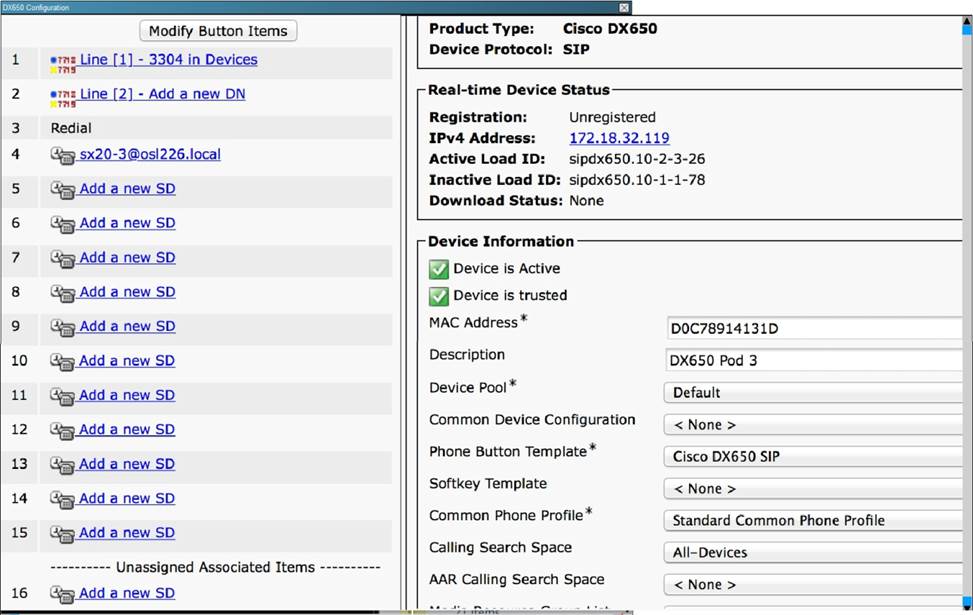
MRGL:

DP:

Locations:

AARG:

CSS:

Movie Failure:
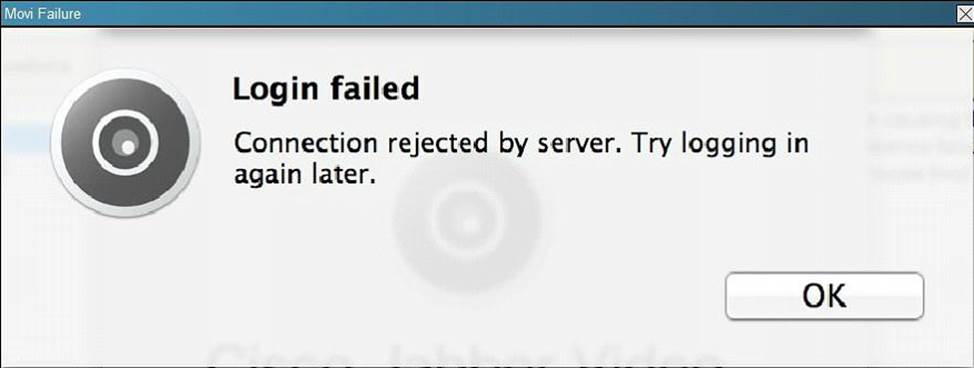
Movie Settings:
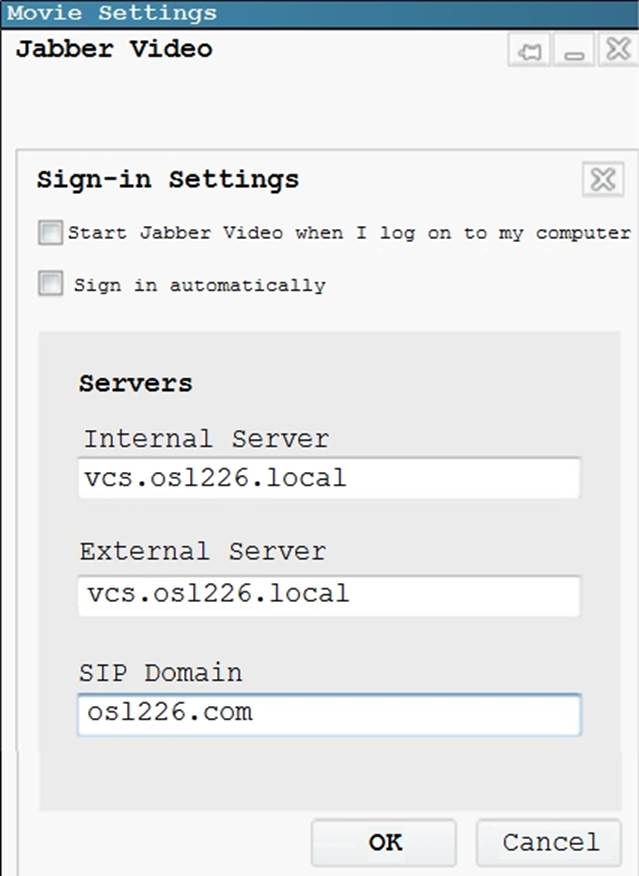
A new DX650 IP phone with MAC address D0C7.8914.132D, IP address is 172.18.32.119 has been added to the Cisco Unified Communications Manager, but is not registering properly.
What is causing this failure?
- A . Device Pool cannot be default.
- B . The DX650 is the incorrect calling search space.
- C . The DX650 Phones does not support SIP.
- D . The location Hub_None has not been activated.
- E . The DX650’s MAC address is incorrect in the Cisco UCM.
Scenario:
There are two call control systems in this item.
The Cisco UCM is controlling the DX650, the Cisco Jabber for Windows Client, and the 9971 Video IP Phone.
The Cisco VCS is controlling the SX20, the Cisco TelePresence MCU, and the Cisco Jabber TelePresence for Windows.
SX20 System information:

DX650 Configuration:
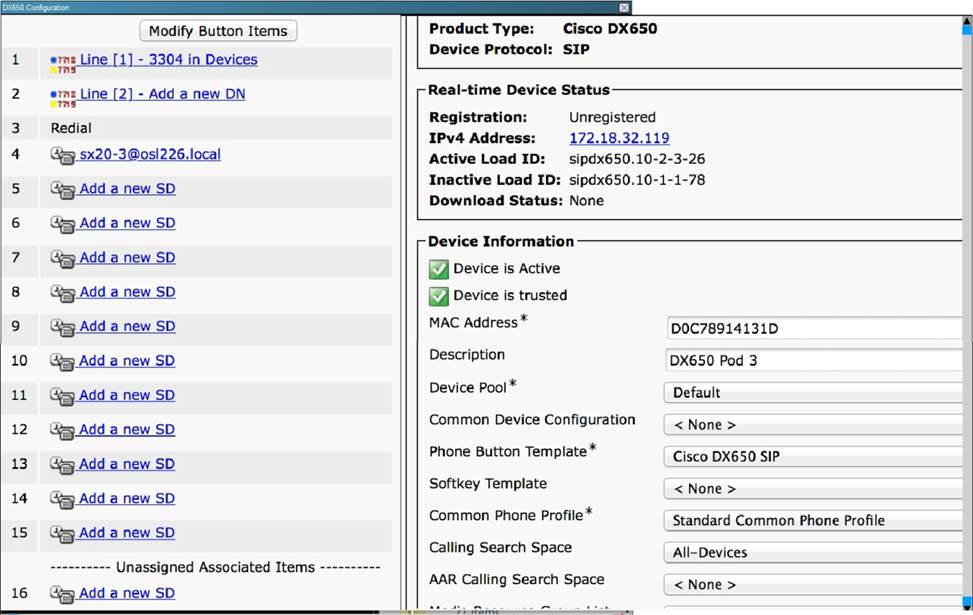
MRGL:

DP:

Locations:

AARG:

CSS:

Movie Failure:
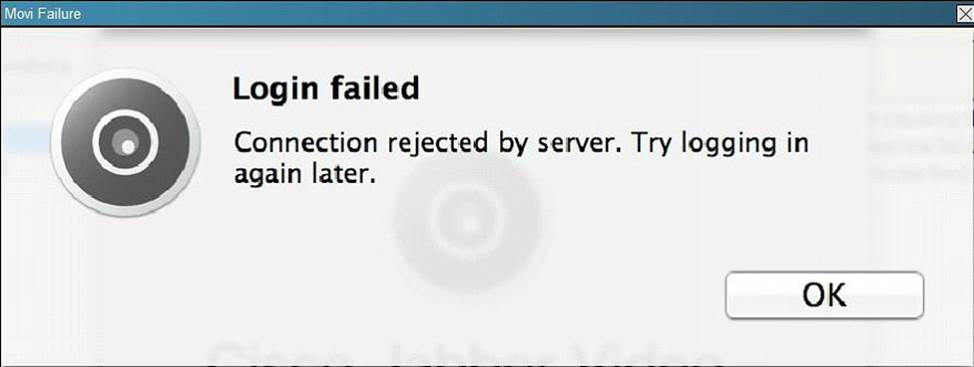
Movie Settings:
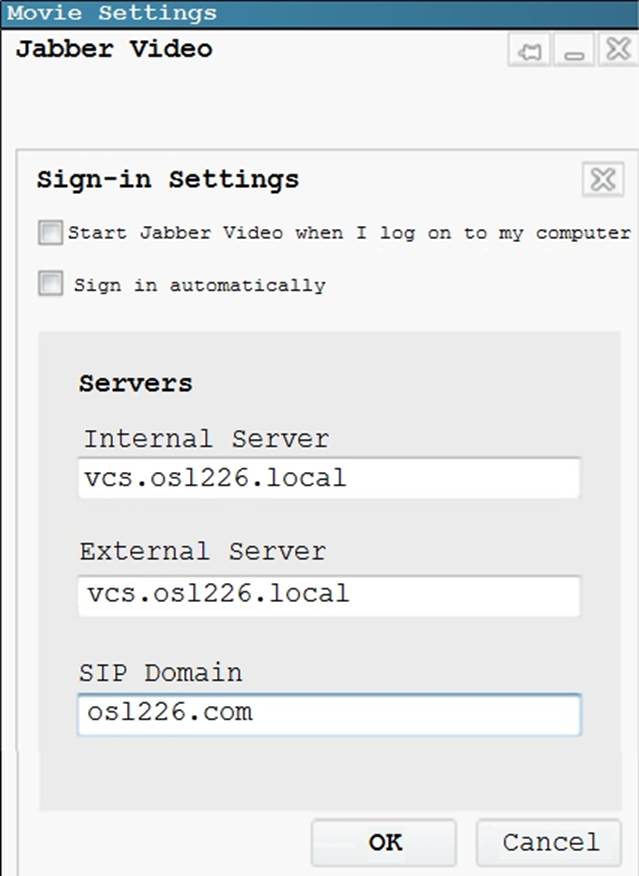
What two issues could be causing the Cisco Jabber Video for TelePresence failure shown in the exhibit? (Choose two)
- A . Incorrect username and password.
- B . Wrong SIP domain configured.
- C . User is not associated with the device.
- D . IP or DNS name resolution issue.
- E . CSF Device is not registered.
- F . IP Phone DN not associated with the user.
Scenario:
There are two call control systems in this item.
The Cisco UCM is controlling the DX650, the Cisco Jabber for Windows Client, and the 9971 Video IP Phone.
The Cisco VCS is controlling the SX20, the Cisco TelePresence MCU, and the Cisco Jabber TelePresence for Windows.
SX20 System information:

DX650 Configuration:
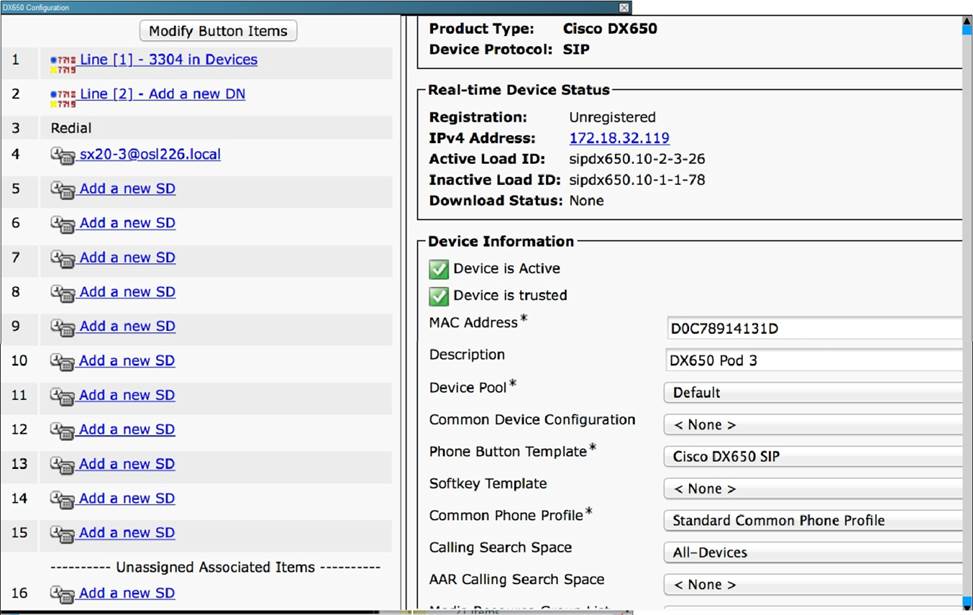
MRGL:

DP:

Locations:

AARG:

CSS:

Movie Failure:
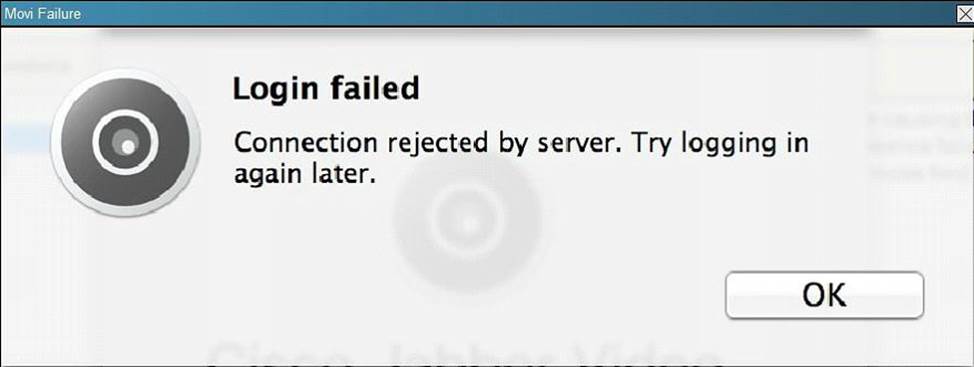
Movie Settings:
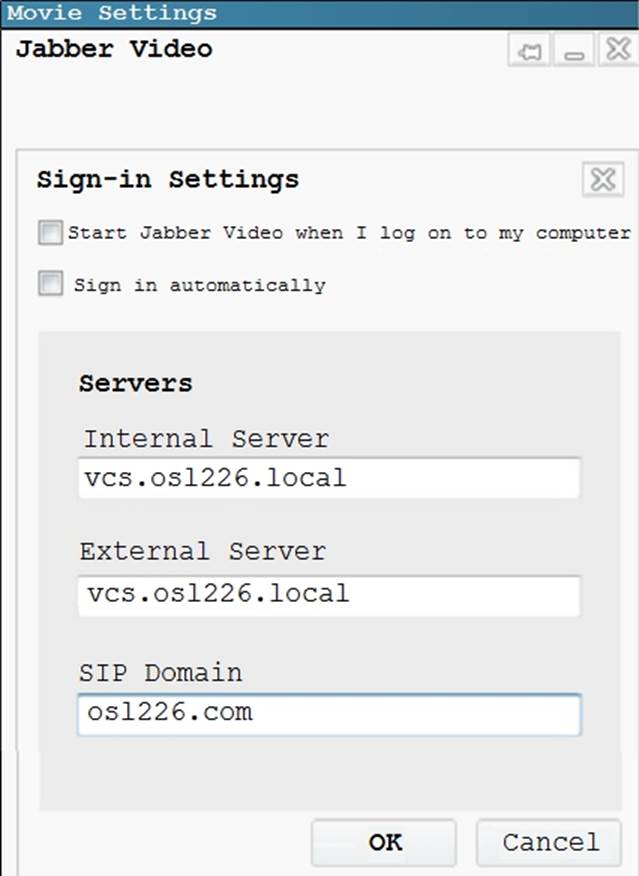
Which device configuration option will allow an administrator to assign a device to specific rights for making calls to specific DNs?
- A . Media Resource Group List
- B . Device Pool
- C . Location
- D . AAR Group
- E . Calling Search Space
Scenario:
There are two call control systems in this item.
The Cisco UCM is controlling the Cisco Jabber for Windows Client, and the 7965 and 9971 Video IP Phone.
The Cisco VCS is controlling the SX20, the Cisco TelePresence MCU, and the Cisco Jabber
TelePresence for Windows.
DP:

Locations:
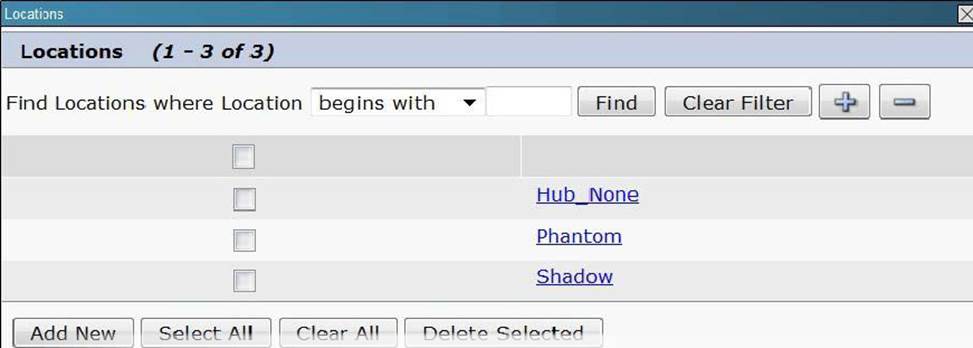
CSS:

Movie Failure:
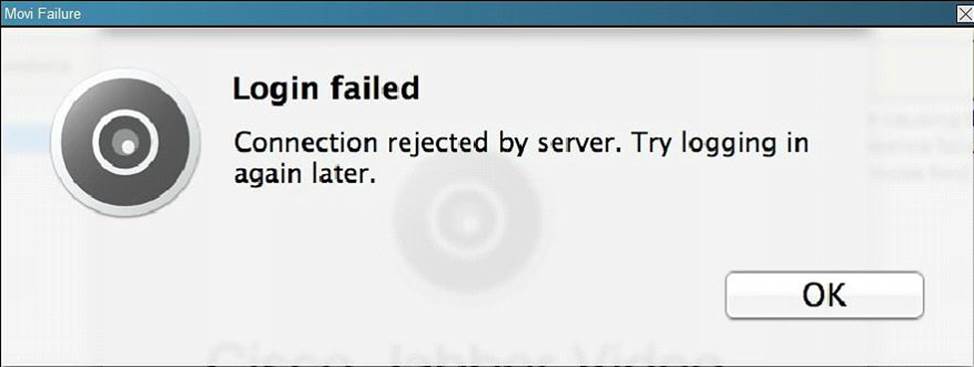
Movie Settings:
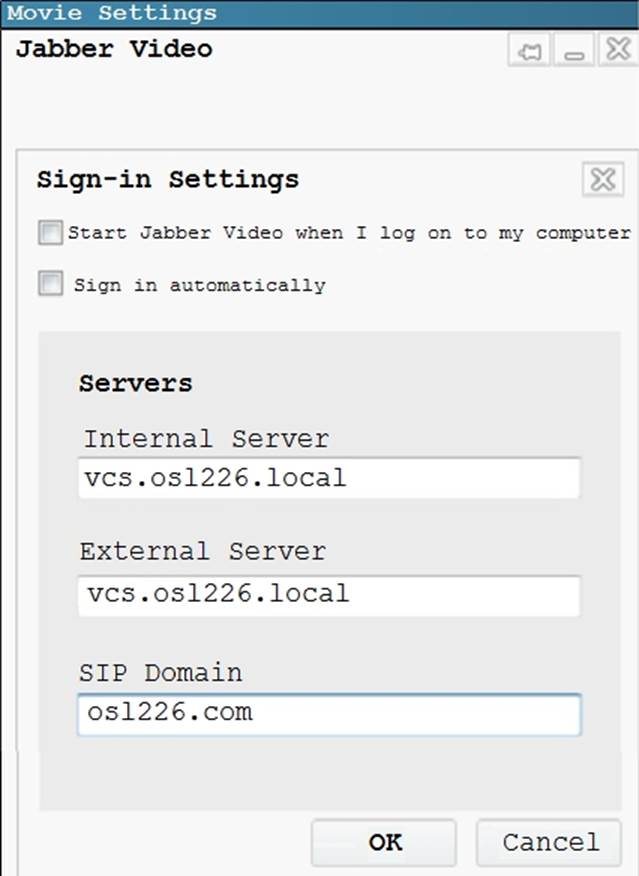
CIPTV2 Topology:
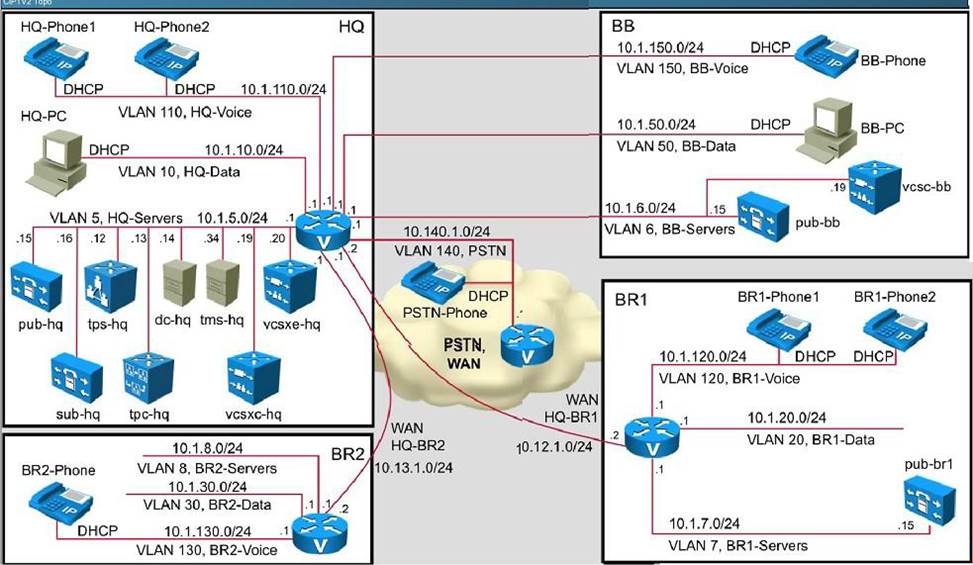
Subzone:

Links:

Pipe:
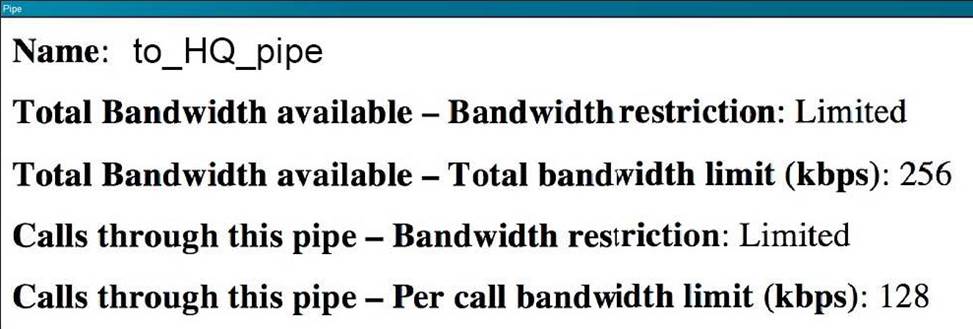
Both of the Cisco TelePresence Video for Windows clients are able to log into the server but can’t make any calls.
After reviewing the exhibits, which of the following reasons could be causing this failure?
- A . Wrong username and/or password.
- B . Wrong SIP domain name.
- C . The TMSPE is not working.
- D . The bandwidth is incorrectly configured.
Latest 300-075 Dumps Valid Version with 520 Q&As
Latest And Valid Q&A | Instant Download | Once Fail, Full Refund

